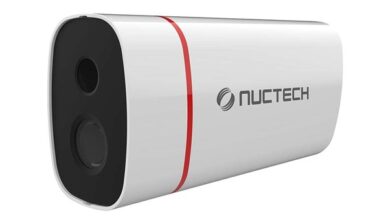
Today’s technology is faster and more powerful,and it creates a lot of heat. Heat pipes help cool things down inside devices like laptops, phones, and even spacecraft. They work quietly in the background to stop overheating and keep everything running well.
But what exactly is a heat pipe? How does it work? And why is it important? Let’s find out! This guide is perfect for DIYers, engineering learners, or anyone curious about cooling technology. It covers how heat pipes work, their uses, and how to apply them in your projects.
What Is a Heat Pipe?
A heat pipe is a very efficient device that moves heat from one place to another using a natural process inside a sealed tube. It works without any motors or fans, making it reliable and perfect for cooling things that get hot.
How Do Heat Pipes Work?
Evaporation: At the hot end, a small amount of liquid inside the pipe (like water) absorbs heat and turns into vapor (steam).
Vapor Travels: This vapor moves through the pipe toward the cooler end because of pressure differences inside the pipe.
Condensation: At the cool end, the vapor cools down and turns back into liquid, releasing the heat it carries.
Liquid Returns: The liquid moves back to the hot end through tiny channels inside the pipe, called a wick, using capillary action (like how a sponge pulls water up).
What Are Heat Pipes Made Of?
Outer Shell: Usually copper or aluminum, which conducts heat well.
Working Fluid: A small amount of liquid sealed inside (water, ammonia, etc.).
Wick Structure: A porous material lining the inside that helps the liquid flow back to the hot end.
The choice of liquid and wick depends on how hot the device gets and where it’s used.
Where Are Heat Pipes Used?
Electronics: Cooling computer parts like CPUs and GPUs.
Aerospace: Managing temperatures in satellites and spacecraft.
Renewable Energy: Systems that recover heat or use solar energy.
Consumer Devices: Smartphones, laptops, and LED lights.
Heat pipes are simple, passive devices that quickly move heat to keep electronic and mechanical systems last longer.
See also: Commercial Kitchens Shropshire: the Ideal Kitchen for Your Business
Types of Heat Pipes
There are several common types of heat pipes, each designed for specific cooling needs:
Standard Heat Pipes
Traditional cylindrical tubes that transfer heat efficiently using evaporation and condensation.
They have high thermal conductivity (50–100 times better than aluminum) and work passively without moving parts.
Used in many electronics and cooling systems.
Vapor Chambers
Flat heat pipes that spread heat over a larger surface area.
Ideal for tight spaces and high-power devices, like servers.
They provide excellent heat spreading where round pipes may not fit.
Fine Grid Heat Pipes (FGHP)
Advanced flat heat pipes with a fine internal grid structure.
Designed for superior heat diffusion.
Used in high-performance electronics such as GPUs and compound semiconductors.
Variable Conductance Heat Pipes (VCHP)
Heat pipes that can adjust their heat transfer ability based on conditions, using a non-condensable gas inside.
Useful in applications where heat loads vary, such as satellites.
Loop Heat Pipes (LHP)
Larger, passive two-phase devices that can carry heat over longer distances.
They use separate liquid and vapor flow paths and are common in space and industrial applications.
Each type offers different advantages and fits different cooling challenges, making heat pipes versatile tools for managing heat in many fields.
Benefits of Using Heat Pipes
Super Efficient Heat Transfer
They move heat 50 to 100 times better than pure aluminum by using a natural process where the liquid turns into vapor and back, quickly carrying heat away to protect sensitive parts.
Energy-Saving Passive Operation
Heat pipes save energy and need little maintenance because they have no moving parts or external power, making them reliable and cost-effective.
Compact and Lightweight
Their small, light design fits easily into tight spaces like laptops, smartphones, and aerospace parts, providing strong cooling without adding bulk.
Durable and Reliable
Heat pipes last a long time because they have no moving parts that can wear out, making them strong and dependable for long-term use.
Heat pipes provide fast, dependable, and flexible cooling to keep electronics and machines working well.
Tips for DIY and Engineering Projects
Starting DIY or engineering projects can be fun, but also tricky. Here are some easy tips to help you succeed and stay safe:
Plan Well Before You Start
Draw Your Ideas: Sketching your project helps you see how it will look and spot problems early.
Make a List: Write down all the materials and tools you need so you don’t forget anything or have to rush out later.
Set a Schedule: Break your project into smaller steps with deadlines to stay organized and keep track of progress.
Use the Right Tools
Learn How to Use Them: Read instructions or watch videos to use tools safely and efficiently.
Get Good Quality Tools: Better tools make your work easier and last longer. Keep them clean and well-maintained.
Stay Safe
Wear Safety Gear: Depending on your project, wear goggles, gloves, masks, or ear protection to protect yourself.
Choose a Safe Workspace: Work in a clean, well-ventilated area with safety items like a fire extinguisher nearby.
Keep Learning and Be Flexible
Start Small: Begin with easy projects to build your skills and confidence before trying harder ones.
Write Things Down: Write down what went well and what didn’t during your project,this helps you learn from mistakes and do even better next time.
Ask for Help: Don’t be afraid to get advice from experts or online communities,they can offer great ideas.
Test and Improve
Make a Prototype: Build a simple model first to test how your project works.
Fix and Adjust: Use what you learn from testing to make your project better.
Follow these tips to feel sure and stay safe when doing your DIY or engineering projects. Have fun building!
Conclusion: What You Should Know About Heat Pipes
Heat pipes are small but powerful devices that quietly keep modern technology cool. They quickly move heat inside gadgets like laptops, smartphones, and even spacecraft,without needing fans or motors.
They do this by using a natural process where the liquid inside the pipe turns into vapor, then back to liquid, carrying heat from hot spots to cooler areas and protecting sensitive parts from overheating.
Heat pipes, made of copper or aluminum with a special liquid inside, transfer heat up to 100 times better than solid metal. They come in different types to cool everything from everyday gadgets to advanced space equipment.
Heat pipes are efficient, energy-saving, small, lightweight, durable, and are used in many industries. Understanding heat pipes helps DIYers and engineers create better cooling systems. Heat pipes quietly keep modern technology cool, safe, and reliable.




